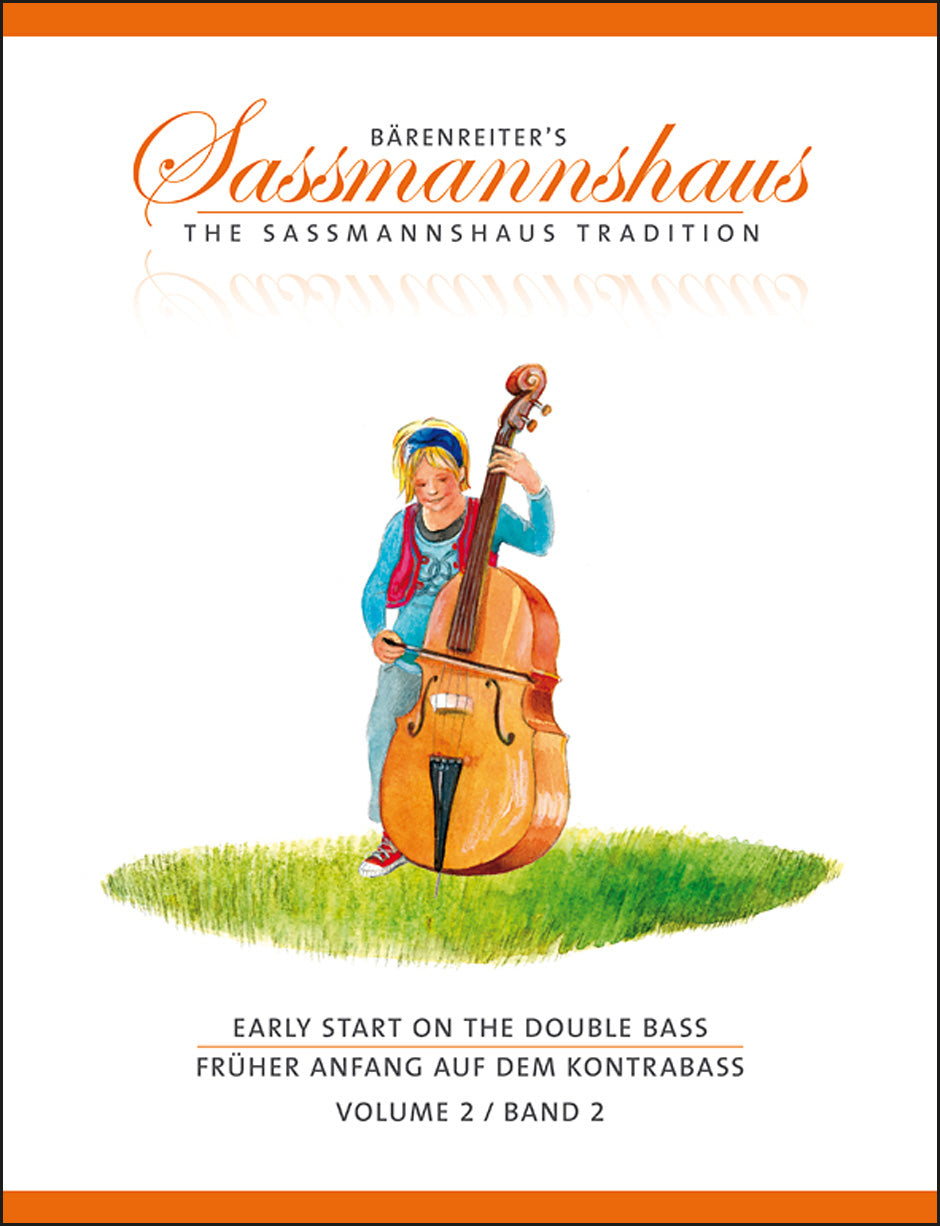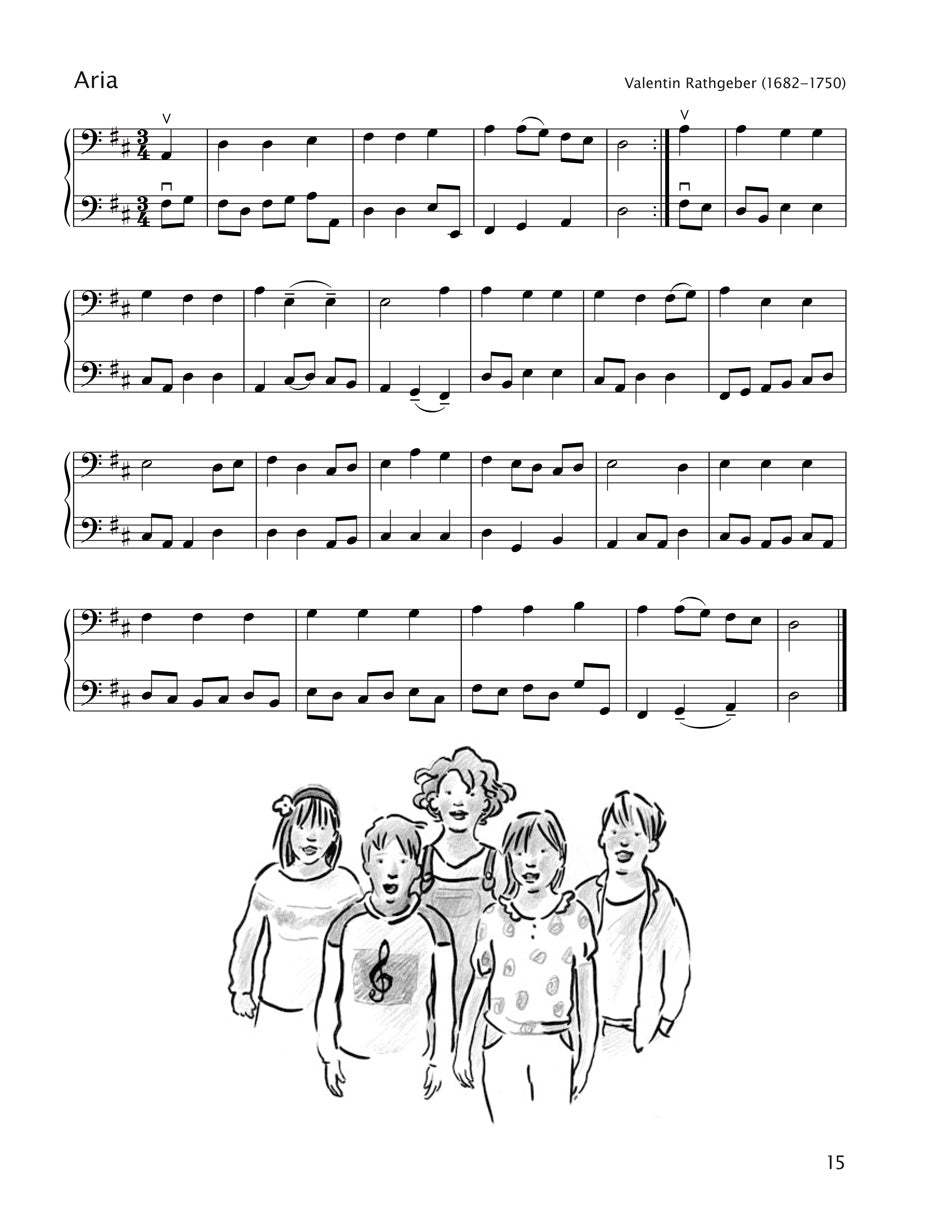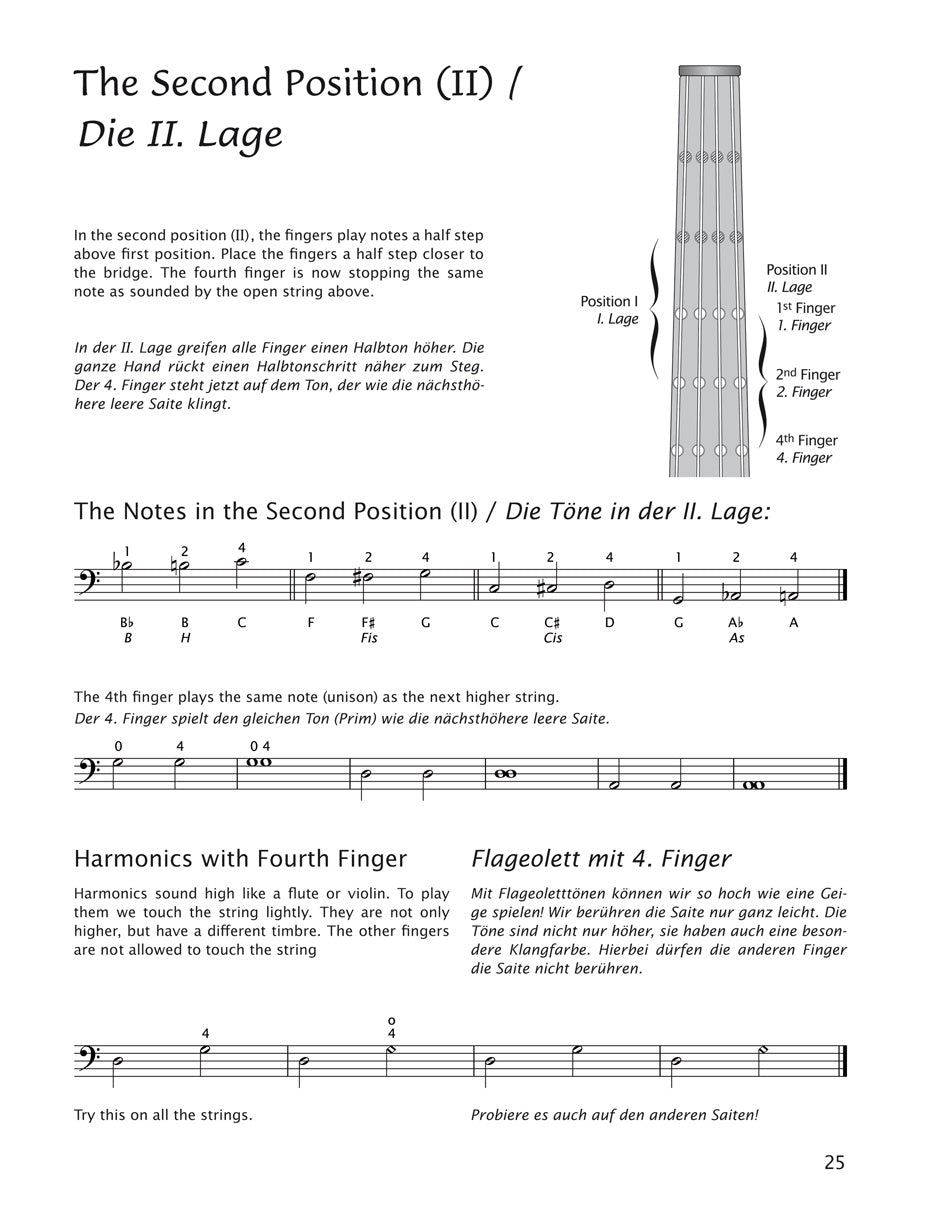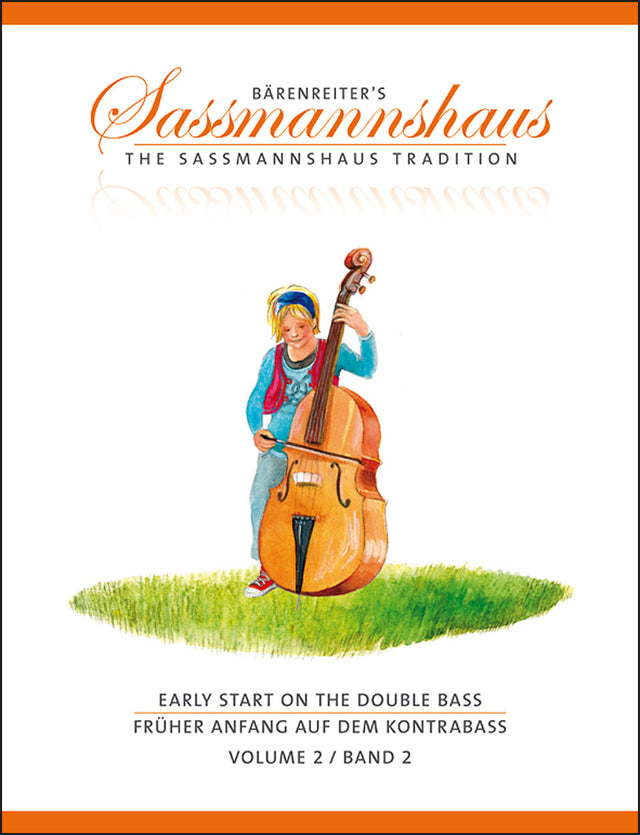Sassmannshaus: Early Start on the Double Bass - Volume 2
In stock and typically ships within 1 business day.
- Authors: Holger Sassmannshaus, J. Peter Close
- Instrumentation: Double Bass
- ISMN:
- Size: 9.1 x 11.8 inches
- Pages: 72
Description
This bilingual volume in German and English is devoted to introducing higher positions, up to and including the third position. As an aid to orientation, all position changes are marked with lines. Climbing games and slippery glissandos help learners to develop a playful attitude toward their instrument. Recurring melodies in different positions are used to combine new course contents with existing skills. This ensures that students develop confidence by retaining control of intonation in simple transpositions.
The varied songs and melodies are now complemented by easy pieces for two basses, including several duets specially composed for this tutor by Boguslaw Furtok to encourage fun in music-making and to pave the way to ensemble playing. The authors Bärenreiter's double bass tutor was written by J. Peter Close and Holger Sassmannshaus on the basis of preparatory work by Egon Sassmannshaus and the double bass teacher Ulrich Schwarz. "Früher Anfang auf dem Double Bass" transfers the principles and experience gained from the violin tutor, combining them with modern methods of double bass playing to ensure quick progress on this special instrument. Holger Sassmannshaus, the son of Egon Sassmannshaus, is a double bass player in the Lower Rhine Symphony in Mönchengladbach/Krefeld.
He also teaches double bass and plays in other ensembles. J. Peter Close, Egon Sassmannshaus's son-in-law, works as a cello and double bass teacher in Munich. The combined knowledge and experience of the Sassmannshaus/Close family makes these three volumes the most thoroughly researched and thought-through double bass tutor for beginners all over the world.
Publishers use a lot of words to describe what they sell, and we know it can be confusing. We've tried to be as clear as possible to make sure you get exactly what you are looking for. Below are descriptions of the terms that we use to describe the various formats that music often comes in.
Choral Score
A score for vocalists that only contains the vocal lines. The instrumental parts are not there for reference. Generally, cheaper than a vocal score and requires multiple copies for purchase.
Facsimile
Reproductions of the original hand-written scores from the composer.
Full Score
For ensemble music, this indicates that the edition contains all parts on a single system (there are not separate parts for each player). In larger ensembles, this is for the conductor.
Hardcover
Hardbound. Generally either linen-covered or half-leather.
Orchestral Parts
Similar to a wind set, this is a collection of parts. In the case of strings, the numbers listed are the number of copies included, though generally these are available individually (often with minimum quantities required).
Paperback
When publishers offer multiple bindings (e.g. hardcover) or study scores, this is the "standard" version. If you're planning to play the music, this is probably what you want.
Performance / Playing Score
A score of the music containing all parts on one system, intended for players to share. There are not separate parts for each player.
Set of Parts
For ensemble music, this indicates that there are separate individual parts for each player.
Solo Part with Piano Reduction
For solo pieces with orchestra, this is a version that contains a piano reduction of the orchestra parts. For piano pieces, two copies are typically needed for performance.
Study Score
A small (think choral size) copy of the complete score meant for studying, and not playing. They make great add-ons when learning concertos and small chamber works.
Vocal Score
A score prepared for vocalists that includes the piano/organ part or a reduction of the instrumental parts.
Wind Set
For orchestral music, this is a collection of wind and percussion parts. The specific quantities of each instrument are notated.
With Audio
In addition to the printed music, the edition contains recordings of the pieces. This may be an included CD, or access to files on the internet.
With / Without Fingering (Markings)
Some publishers prepare two copies - a pure Urtext edition that includes no fingering (or bowing) suggestions and a lightly edited version that includes a minimal number of editorial markings.





